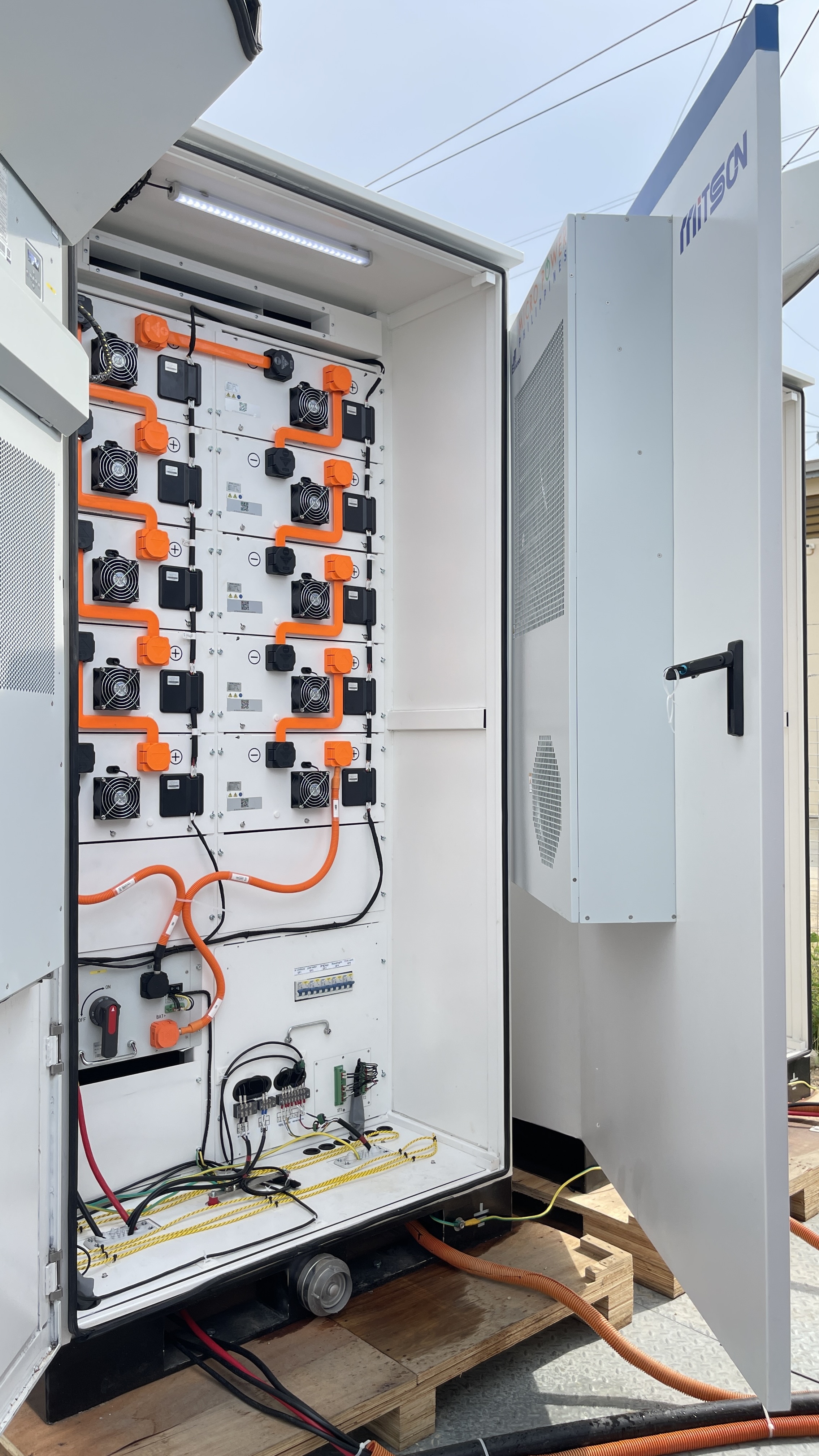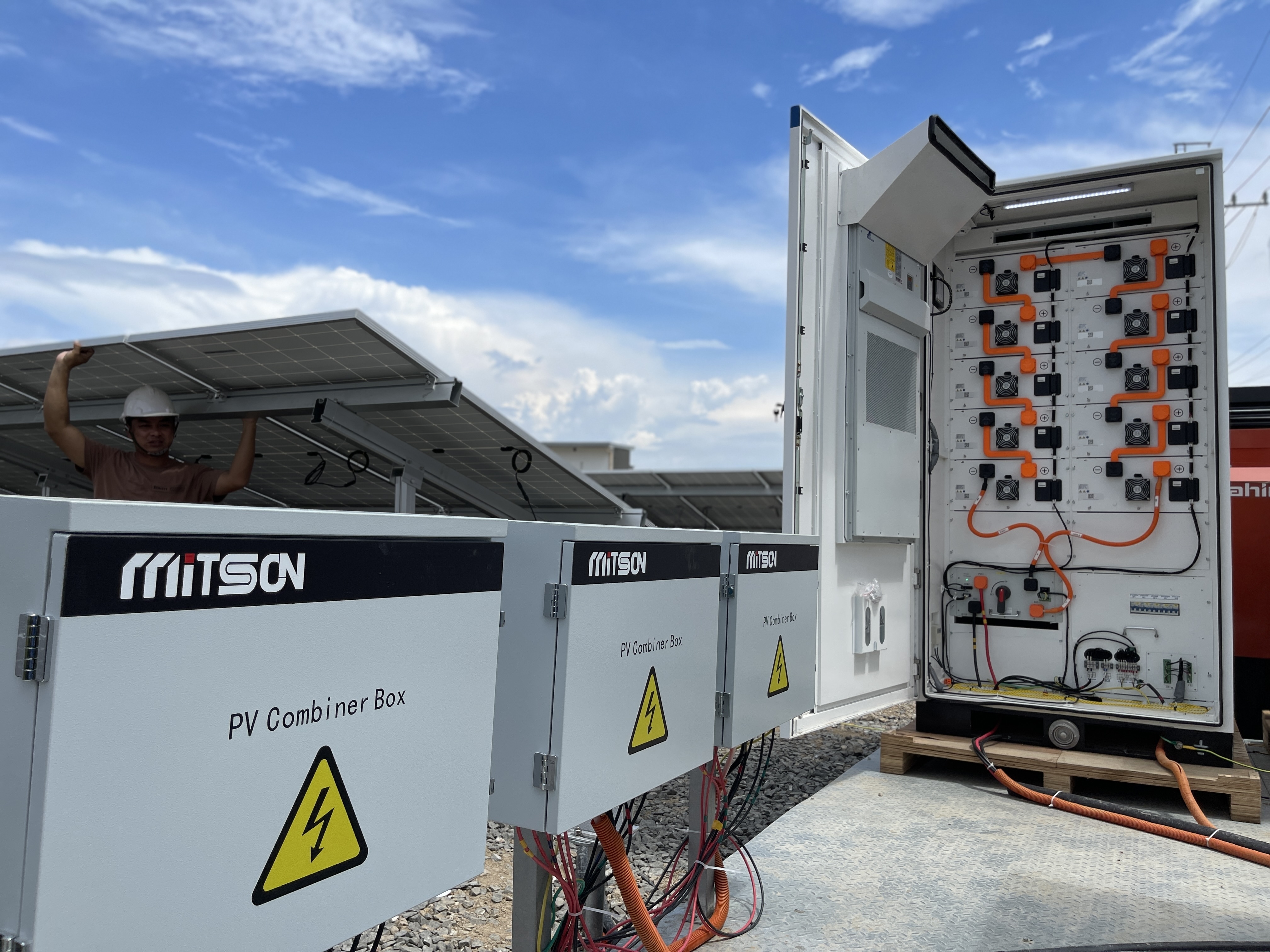NEWS
Energy Storage System Batteries: Types, Advantages, and Disadvantages
Release Time:
2024-11-29 11:00
Source:
MITSCN
Introduction to Energy Storage System Batteries: Types, Advantages, and Disadvantages

Energy storage systems (ESS) are becoming increasingly crucial in optimizing renewable energy use, enhancing grid stability, and providing backup power. The core of any ESS is its battery technology. Different types of batteries are used in energy storage systems, and the choice of battery impacts system performance, cost, and suitability for various applications. In this article, we’ll explore the different types of batteries used in energy storage, their advantages and disadvantages, and the specific requirements for various applications such as residential, commercial, industrial, and utility-scale solar energy systems.
Types of Batteries in Energy Storage Systems
There are several types of batteries used in energy storage systems, each with its unique properties. The most common types include:
1. Lithium-Ion (Li-ion) Batteries
Lithium-ion batteries are the most widely used type in modern energy storage systems due to their high efficiency, long lifespan, and compact design.
-
Advantages:
- High Energy Density: Li-ion batteries can store a large amount of energy in a small space, making them ideal for applications where space is limited.
- Long Lifespan: They typically last for 10-15 years, which makes them cost-effective in the long run.
- High Efficiency: Li-ion batteries have high round-trip efficiency (about 90-95%), which means they lose very little energy in charging and discharging cycles.
- Fast Charging: These batteries can be charged more quickly compared to other types.
-
Disadvantages:
- Cost: Li-ion batteries are more expensive upfront compared to some other types, though prices are decreasing with technological advancements.
- Thermal Management: They require a cooling system to avoid overheating, particularly in large installations.
- Degradation: Over time, the battery’s capacity can degrade if it is charged or discharged excessively.
2. Lead-Acid Batteries
Lead-acid batteries are one of the oldest battery technologies and have been used for decades in energy storage applications.
-
Advantages:
- Lower Initial Cost: Lead-acid batteries are cheaper to purchase compared to lithium-ion batteries.
- Mature Technology: This battery technology is well-established and widely understood.
-
Disadvantages:
- Shorter Lifespan: Lead-acid batteries have a shorter lifespan, typically 3-5 years, compared to lithium-ion batteries.
- Lower Efficiency: These batteries have a lower round-trip efficiency (around 70-80%) than lithium-ion batteries.
- Maintenance: Lead-acid batteries often require regular maintenance, including checking water levels and cleaning terminals.
3. Sodium-Sulfur (NaS) Batteries
Sodium-sulfur batteries are high-temperature batteries that offer large-scale storage solutions for utility applications.
-
Advantages:
- High Energy Density: NaS batteries have high energy density and are suitable for grid-scale applications.
- Long Cycle Life: They have a long cycle life, lasting more than 10,000 cycles.
-
Disadvantages:
- High Operating Temperature: NaS batteries require high operating temperatures (between 300–350°C), which means they need specialized equipment for cooling.
- Cost: Initial costs are relatively high compared to lead-acid batteries.
4. Flow Batteries
Flow batteries store energy in liquid electrolytes, offering a scalable and flexible solution for large-scale energy storage.
-
Advantages:
- Scalability: Flow batteries are highly scalable, making them ideal for large installations like grid storage.
- Long Lifespan: They can last 10–20 years, and the system’s capacity can be increased by adding more electrolyte.
-
Disadvantages:
- Low Energy Density: Flow batteries have lower energy density, meaning they are larger and bulkier compared to lithium-ion batteries.
- Complexity: They are more complex to install and operate, requiring specialized maintenance.
Battery Selection Based on Application
The choice of battery for an energy storage system (ESS) depends on various factors, including the application type, energy demands, and budget. Below are the battery requirements for different energy storage applications:
1. Residential Applications
For residential use, homeowners often install energy storage systems to store energy generated by solar panels, provide backup power during outages, or optimize energy use during peak periods.
-
Battery Requirements:
- Compact Size and Efficiency: A small footprint and high efficiency are essential for residential systems.
- Long Cycle Life: Since residential customers typically expect long-term usage, batteries with longer life cycles, such as lithium-ion, are preferred.
- Low Maintenance: Homeowners generally prefer batteries that require minimal maintenance.
-
Ideal Battery:
Lithium-ion batteries are the most popular choice for residential ESS due to their compact size, long lifespan, and high efficiency. For example, Tesla Powerwall and LG Chem RESU are common lithium-ion-based solutions.
2. Commercial and Industrial Applications
For commercial and industrial users, energy storage systems are often used for load shifting, peak shaving, and energy backup.
-
Battery Requirements:
- Scalability and High Power Output: Commercial and industrial applications often require larger storage capacities and faster discharge rates.
- Cost-Effectiveness: As the scale of storage increases, cost becomes a critical factor, so batteries with a lower initial cost, like lead-acid or lithium-ion, may be more appropriate.
- High Efficiency and Long-Term Reliability: Industrial clients need efficient systems that provide long-term service with minimal downtime.
-
Ideal Battery:
For commercial and industrial applications, lithium-ion batteries offer the best balance of efficiency, cost, and lifespan. In some cases, lead-acid batteries might still be used for smaller-scale systems due to their lower initial cost.
3. Utility-Scale or Large-Scale Solar Farms
Utility-scale solar installations typically require large-scale battery storage systems to store excess energy generated during the day for use at night or during periods of low generation.
-
Battery Requirements:
- High Storage Capacity: Utility-scale systems need batteries that can store large amounts of energy, often in the megawatt-hour (MWh) range.
- High Efficiency and Low Maintenance: For grid-scale projects, maximizing the return on investment through high efficiency and low maintenance is essential.
- Longevity: Given the massive scale and long-term nature of these projects, the batteries must be able to operate for extended periods with minimal degradation.
-
Ideal Battery:
Lithium-ion batteries are commonly used in utility-scale energy storage due to their high efficiency, energy density, and relatively long lifespan. Flow batteries and sodium-sulfur (NaS) batteries are also viable options for very large-scale installations, depending on the specific needs of the grid.
Conclusion
When selecting a battery for an energy storage system, it’s essential to consider the specific requirements of the application, including the expected energy load, available space, cost considerations, and expected lifespan. Lithium-ion batteries are the go-to choice for most modern energy storage applications due to their compact size, high efficiency, and long life. However, depending on the application, other battery types, such as lead-acid, sodium-sulfur, or flow batteries, may be more appropriate.
In any case, as energy storage systems continue to play an increasingly vital role in renewable energy integration and grid stability, understanding the strengths and weaknesses of each battery technology will be crucial in optimizing performance and achieving a sustainable energy future.

Related News


